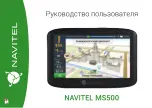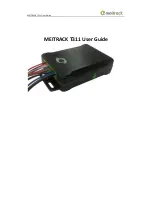
CAP 413
Radiotelephony Manual
Chapter 2 Page 19
1.17.5
In order to ensure any restriction is not blocked by a pilot acknowledgement, the
phrase or word, indicating when a clearance or instruction should be complied with,
will normally be placed before the executive instruction (Paragraph 1.17.6, 1st and
2nd examples), but in certain cases the phrase or word may be placed between the
instruction and the value of the instruction (Paragraph 1.17.6, 3rd and 4th examples).
1.17.6
The phrases and words described in this section are most commonly used in
association with level instructions (see also Chapter 3, Level Reporting, Paragraph
1.2), but may be used in other circumstances if appropriate. Examples are shown
below:
1.18
Communication Failure
1.18.1
Air – Ground
a) Check the following points:
i) The correct frequency has been selected for the route being flown.
ii) The Aeronautical Station being called is open for watch.
iii) The aircraft is not out of radio range.
iv) Receiver volume correctly set.
b) If the previous points are in order it may be that the aircraft equipment is not
functioning correctly. Complete the checks of headset and radio installation
appropriate to the aircraft.
c) When an aircraft station is unable to establish contact with the aeronautical station
on the designated frequency it shall attempt to establish contact on another
frequency appropriate to the route being flown. If this attempt fails, the aircraft
station shall attempt to establish communication with other aircraft or other
aeronautical stations on frequencies appropriate to the route.
d) The pilot may still be unable to establish communication on any designated
aeronautical station frequency, or with any other aircraft. The pilot is then to
transmit his message twice on the designated frequency, including the addressee
for whom the message is intended, preceded by the phrase 'TRANSMITTING
BLIND' in case the transmitter is still functioning.
e) Where a transmitter failure is suspected, check or change the microphone. Listen
out on the designated frequency for instructions. It should be possible to answer
questions by use of the carrier wave if the microphone is not functioning (see
Chapter 8 paragraph 1.7.1).
BIGJET 347,
after passing
North
Cross, descend FL80
After passing
North Cross,
descend FL80, BIGJET 347
BIGJET 347,
when ready
descend
FL170, Report leaving FL210
When ready
descend FL170. Report
leaving FL210, BIGJET 347
BIGJET 347, reduce speed
now
210 kt
Reducing speed
now
210 kt,
BIGJET 347
BIGJET 347, climb
immediately
FL35
Climbing
immediately
FL35,
BIGJET 347
31 March 2011
Summary of Contents for 413
Page 1: ...CAP 413 Radiotelephony Manual Edition 20 www caa co uk Safety Regulation Group ...
Page 2: ......
Page 3: ...CAP 413 Radiotelephony Manual Edition 20 Safety Regulation Group 17 November 2011 ...
Page 6: ...CAP 413 Radiotelephony Manual Amendment Number Amendment Date Incorporated by Incorporated on ...
Page 10: ...INTENTIONALLY LEFT BLANK ...
Page 18: ...INTENTIONALLY LEFT BLANK ...
Page 20: ...INTENTIONALLY LEFT BLANK ...
Page 68: ...INTENTIONALLY LEFT BLANK ...
Page 126: ...INTENTIONALLY LEFT BLANK ...
Page 162: ...INTENTIONALLY LEFT BLANK ...
Page 170: ...INTENTIONALLY LEFT BLANK ...
Page 178: ...INTENTIONALLY LEFT BLANK ...
Page 206: ...INTENTIONALLY LEFT BLANK ...
Page 248: ...INTENTIONALLY LEFT BLANK ...
Page 254: ...INTENTIONALLY LEFT BLANK ...
Page 264: ...INTENTIONALLY LEFT BLANK ...















































